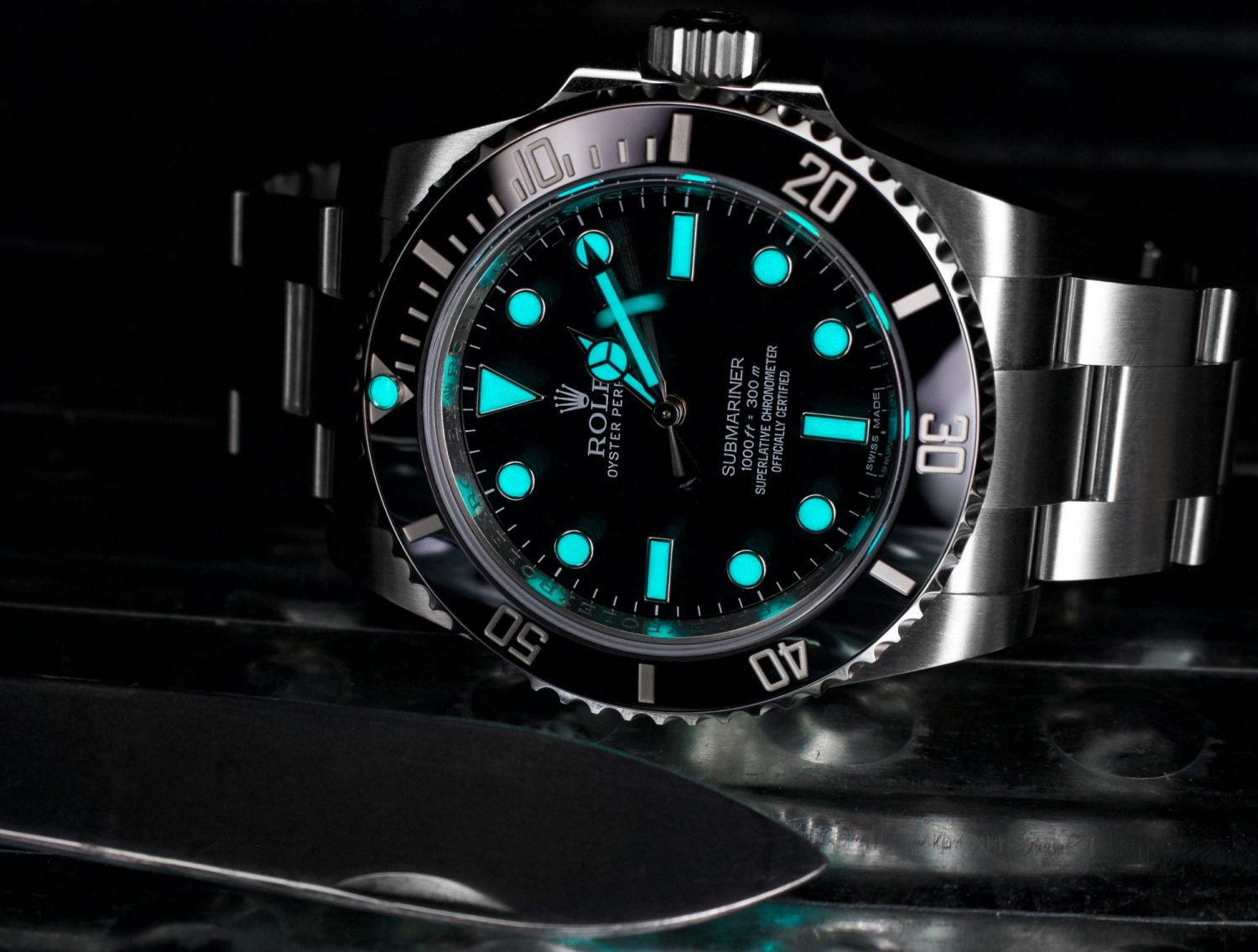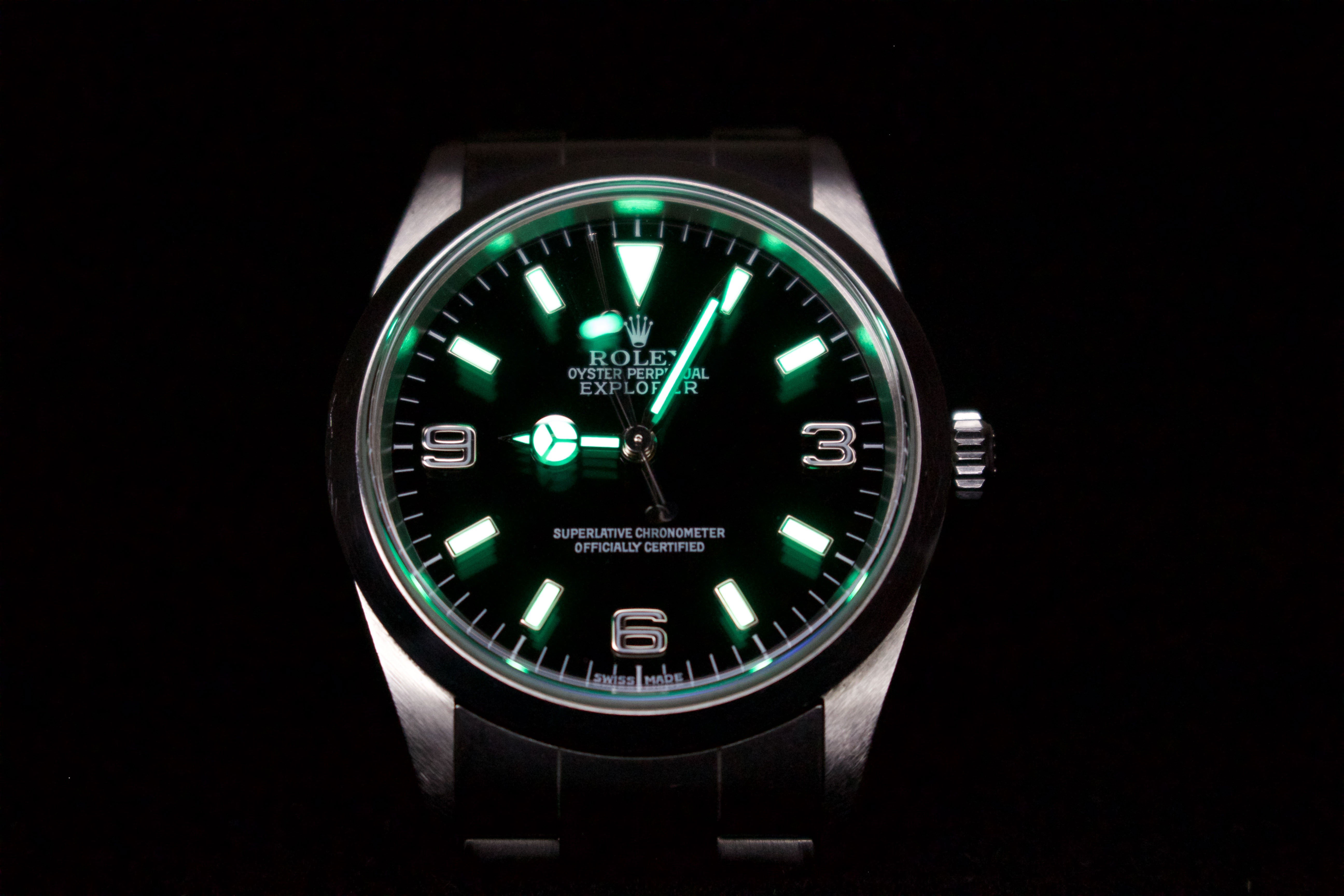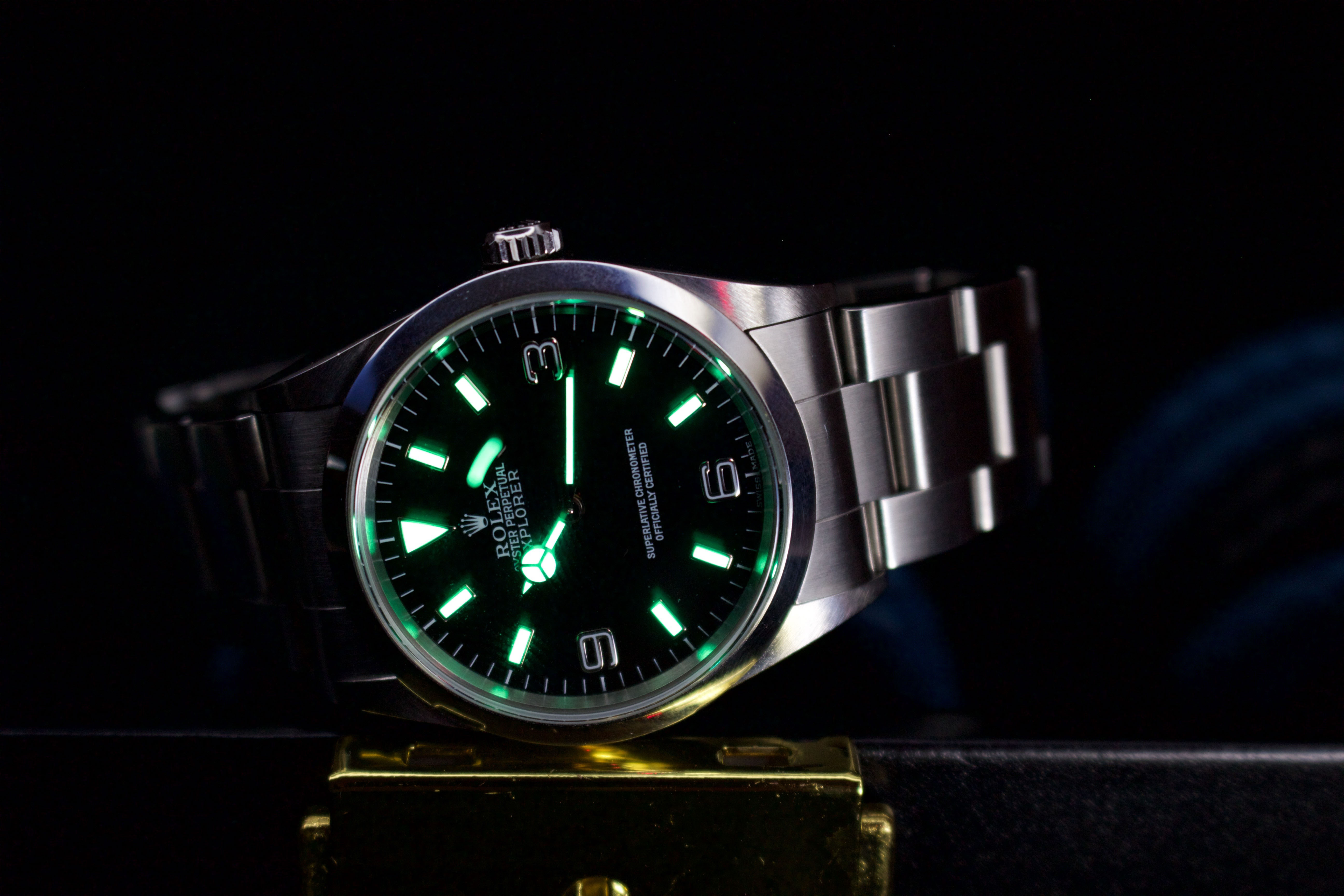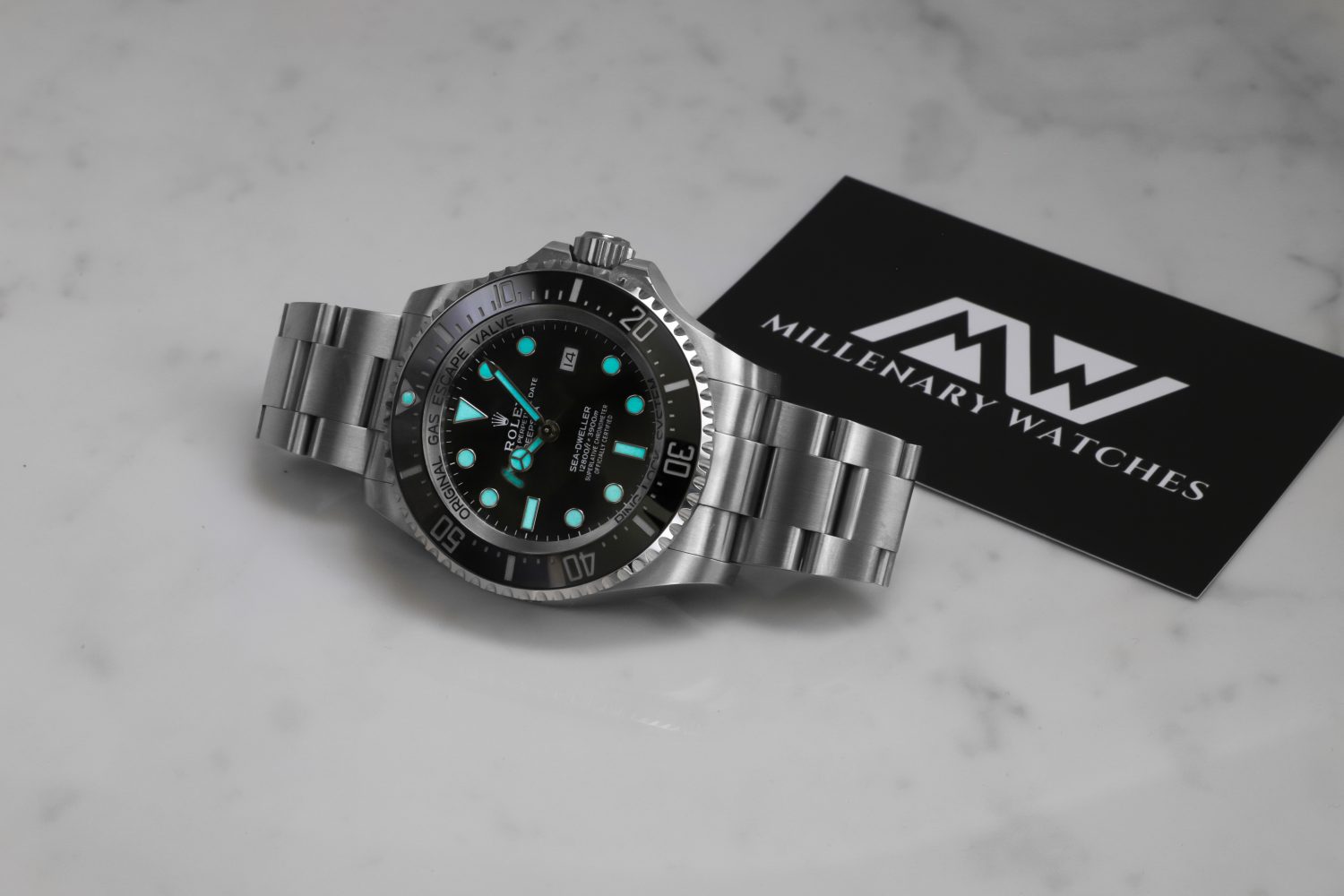
How Long does Rolex Lume Last? Complete Guide
The lume – luminosity is a critical aspect of many watches. In particular for functional sports watches that are meant as tools. On most watches, you find the luminous material, usually referred to as “lume” applied to the hour markers and the hands of the watch. The purpose is of course to improve the legibility in low-lit conditions.
This is particularly important for watches that are built for professionals that rely on their watches for critical purposes. And as you know, many of Rolex’s watches are just that, professional watches. And with that said, it’s obvious that Rolex puts great importance on the lume of its watches and making sure that they provide excellent legibility in any environment. In this article, we will discuss how long Rolex lume lasts, as well as dive deeper into Rolex lume in general.
About Rolex lume
Rolex themselves state the following:
“In the dark, deep in a cave, or under water with low visibility, the wearer of a Rolex watch must be able to tell the time easily and with confidence. That is why Rolex uses a special luminescent material that makes its watches – aside from selected timepieces in the Classic category, for aesthetic reasons – visible in dark environments.”
Over the years, Rolex has used several different substances for the luminosity of its watches.
They first started out with radium due to its perpetual, strong luminous glow. At the time, radium was used for everything from dashboards inside planes to dashboards in cards. But eventually, people realized just how dangerous the radioactivity from radium was, and eventually, it was banned for commercial use.

Rolex then replaced radium with tritium, a radioactive substance but much less than radium. Since tritium is radioactive, it glows from radioactivity and therefore, the glow is constant. The issue is that tritium has a half-life of 12.3 years, meaning that after this time, it will have lost half of its glowing capabilities.
Partly for this reason, Rolex then moved to Luminova in 1998. This was the first time that Rolex used a non-radioactive substance for the luminosity of its watches. Whilst the half-life was one component of the change, Luminova is non-radioactive which increases safety, it also doesn’t discolor over time. The latter is a big deal for Rolex which always strives to make watches that continue looking exactly the same decade after decade. Luminova was invented by the company Nemoto & Co. Ltd who invented the material in 1993 and patented it in 1955. Since Luminova is not radioactive, it is instead photoluminescent.
Rolex only used Luminova for two years, between 1998 and 1999 when they changed once again to the improved and upgraded Super-Luminova. Luminova and Super-Luminova are the same, only that the latter is made in Switzerland whereas the other is not.
Super Luminova was introduced by Rolex around the year 2000. Rolex used Super Luminova up until 2008 when they had finally invented a proprietary compound for the lume of its watches, Chromalight.
Chromalight was invented in 2008 and is developed and patented by Rolex and is the first on Rolex watches to emit blue light instead of green. The purpose, in Rolex’s words, is
All watches that have lume are equipped with Chromalight, but not all Rolex watches have it. Most of the Day-Date models, for example, do not have lume on the hands, nor the hour markers.
“The hands, hour markers and other display elements of the Professional watches and most of the Classic watches in the Oyster Perpetual collection are coated or filled with a luminescent material exclusive to Rolex that guarantees optimal and long-lasting legibility.”
In regards to the question of how long Rolex lume lasts, let’s look closer at the answer to that question.

Lume Last VS glow
Last vs glow are two different things that we need to clarify. Firstly, we have radioactive compounds like radium and tritium which emit light due to radioactivity. Then we have the later Rolex lume compounds like Luminova and Chromalight which are photoluminescent materials which is their ability to emit light after absorbing energy from a radiation source.
Everything deteriorates after enough time, and this can be said about all luminous compounds. But whilst it’s easy to calculate how long the lume of radioactive materials is, it’s not as easy to do it for photoluminescent materials.
On this note, when we talk about “last”, we talk about, for example, how much of the glowing capabilities the luminous material will have after X amount of years. There’s no real data about this for the non-radioactive materials when it comes to Rolex watches as it will depend on a number of factors.

But perhaps the more interesting and important is how long these will glow because that’s a completely different thing. How long they will glow is essentially how long they glow after they have been exposed to light. And in these instances, we’re always talking a matter of hours for luminova, Super-luminova, and Chromalight. Or, they may glow beyond this point, but the glow will tend to be very weak.
The benefit of non-radioactive luminescent compounds is that they are not limited by their half-lives.
How long does Rolex lume last? Chromalight
Now that you know all the different types of luminous materials that Rolex has used for its watches over the years, we can sort out how long they glow.
How long lume lasts depends on a number of factors. The most important is if the lume is radioactive or photoluminescent. Unlike with radium lume, photoluminescent first needs to be “charged” with sunlight or any other ambient light in order to glow. As such, the latter will depend on how long it has been charged and how powerful the light that charged it was.
So before you can figure out roughly how long the lume on your Rolex watch lasts, you need to decide which lume material it has
Radium
Radium is a radioactive substance and therefore, it glows as a result of the radiation, not because it is photoluminescent, which is what we are used to in today’s Rolex. Radium tends to lose its ability to glow ” in the dark in a period ranging anywhere from a few years to several decades”. But like all things that glow, it will eventually stop glowing consistently at some point. Regardless, we are talking about years, usually decades. This is of course not something we are used to with today’s luminous materials.
Radium has a half-life of 1600 years, but it will stop glowing much earlier than that.
Tritium
As mentioned, tritium has a half-life of approximately 12 years. After roughly 24 years, the glow is so weak that it’s barely noticeable in most environments. Therefore, the lume no longer serves any real purpose. At the very least, it does not do what it was supposed to do. You could therefore say that tritium Rolex lume lasts about 24 years, but the glow will gradually get weaker over the years and decades.
Luminova
Luminova is not a radioactive material and therefore, it won’t glow in the same way that radioactive ones do. Luminova is a photoluminescent lume material which means that its glow will depend on how long it has been “charged” and the type of light it was exposed to. With these two factors in mind, the Luminova glow on a Rolex watch can last from a few minutes to about 15 hours. The general But it’s important to point out that the strength of the lume will get weaker and weaker as time passes.
Since, according to Rolex, Chromalight lasts “The blue glow lasts up to eight hours with a uniform luminosity throughout, practically twice as long as that of standard luminescent materials.”, Luminova would be half of that, roughly four hours.
Super-LumiNova
Super-LumiNova and Luminova are basically the same. As such, Rolex Super-Luminova lasts for about 4 hours as well.
A man named Nemoto founded Nemoto & Co to bring his invention of a luminous compound that contained phosphorescent pigments. After a few years, RC Tritec AG, a Swiss-based company, signed a partnership with Nemoto & Co to produce in Switzerland Luminova. They did so and started to promote the luminous compound under the name Super-LumiNova.
Chromalight
Chromalight was introduced in 2008 and was an improved luminescent compound for many reasons. Rolex states:
“the luminescent material used to coat or fill the different components emits a light that is exceptionally bright and long-lasting, far outperforming watchmaking norms. The luminosity duration of the Chromalight display is almost double that of traditional phosphorescent material. The intensity of the luminosity is also more consistent over the entire emission time.”
According to Rolex, Chromalight can last up to eight hours.
In 2021, Rolex made adjustments and improvements to its Chromalight compound and as a result, the intensity of the blue glow lasts longer thanks to a new, innovative luminescent material. Furthermore, the compound also has a brighter white hue in daylight. The first watches to feature this upgraded compound are the Explorer 124270 and Explorer II 226570, released the same year. The new luminescent material will be gradually introduced to other models in the catalog in the years to come.
With the improved Chronalight compound, we can expect the Chromalight to last slightly longer than eight hours
Rolex Chromalight has phosphorescent properties which means that it is able to store light energy and release it slowly as it gets dark. Light is emitted by releasing energy within the material which is a phenomenon that produces photons. Photons are elementary particles that make up light.





Recently purchased a 2116 Datejust 36. The lime lasts only a few minutes after holding a UV torch over it.
How can I improve this?
Hi,
There is no Datejust with this reference number so it’s a bit difficult to know which exact model you are referring to. But if it is an older Rolex watch, it will use tritium and therefore, the glow will get weaker over time due to the half-life of tritium. In this case, the only way to get a stronger glow is to change the dial. If you do, you want to make sure to keep the old dial to retain the value of the watch. Do note that tritum is not charged like the modern watches which use Chromalight. Instead, the glow comes from the radioactive nature of tritium. Therefore, it does not need ot be charged.
Kind regards,
Millenary Watches